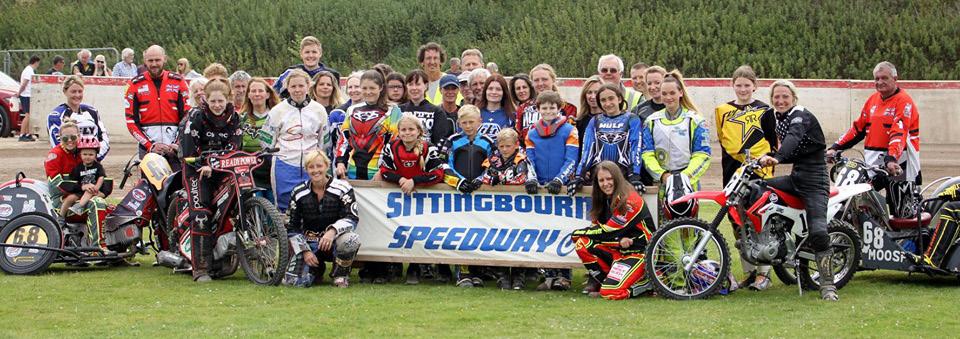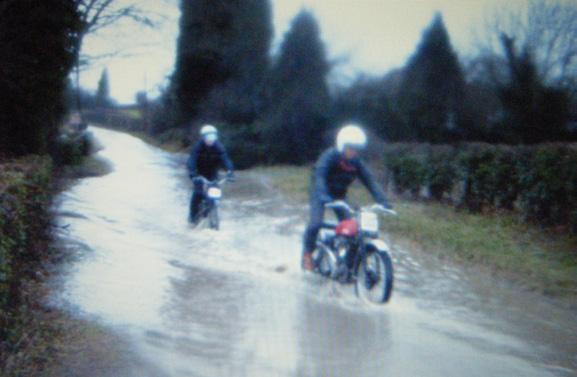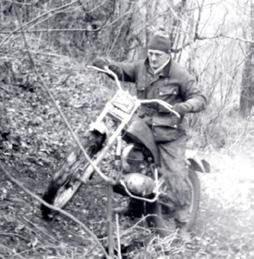
3 minute read
Pit Bikes - Clash Of The Titans
Words and pictures by Alan Turner
Pit bike racing is a fairly recent phenomenon in Britain, but the sport originated in America (where else?) and was becoming established even before the Millennium. That perennial favourite, the Honda monkey bike, was the original choice, then Kawasaki saw an opportunity and came up with a completely new style of machine, soon copied by a number of manufacturers. Racers being racers it was perhaps inevitable that bikes that were once accessories should have their turns as centres of attention.
Advertisement
In the States, even roadracing featured among the disciplines for which the bikes could be used. As most bike sports this side of the pond frown on riding in the paddock, it took a while for interest in pit bikes to gain any traction. Eventually, cheap second-hand machines started to appear on the market and, unsurprisingly, proved popular, initially with younger riders and then with more senior interest.
Pit bike racing on speedways, especially the speedway minitracks, has grown in popularity. Now, regular track racers enjoy the opportunity for off-season outings while others are encouraged because it must be the cheapest route of all into motorcycle speed sport.
Over the winter, weather permitting, there had been events at Iwade as well as Arlington. This culminated in a challenge match, 'The Clash of the Titans', with an event at both venues for Iwade Colts v. Eastbourne Mini Trackers, the aggregate score to determine the winner.
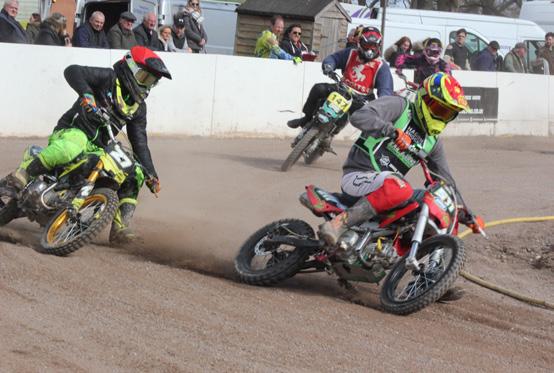
Connor Dugard and Tom Brennan demonstrate their speedway skills
The mini-bike tracks are much smaller than the full size speedway ovals. Eight bikes contest a race. There are two starting tapes, a few yards apart, with the second row having the higher scoring riders. The starter lets the tapes go simultaneously. If that sounds like a recipe for mayhem, then you are imagining it correctly. The track gets crowded as the bikes are so evenly matched in performance, racecraft is pushed to the limit, but with little room in which to manoeuvre, team riding often plays a big and usually incidental part. To form any meaningful race strategy would need the mind of a chess Grand Master.
The second-leg, 15 March, Eastbourne meeting had a 57-strong entry, although nonappearances led to some slots open for rider replacement. The first leg at Iwade saw Eastbourne come away with a 13-point advantage. In speedway, that result would be a handsome margin, but pit bike scoring is 5-4-3-2-1-0-0-0, so not an impossible task for Iwade and with some consistency at the front that lead could soon be whittled down. With 28 heats there were certainly still plenty of opportunities, in theory at least.
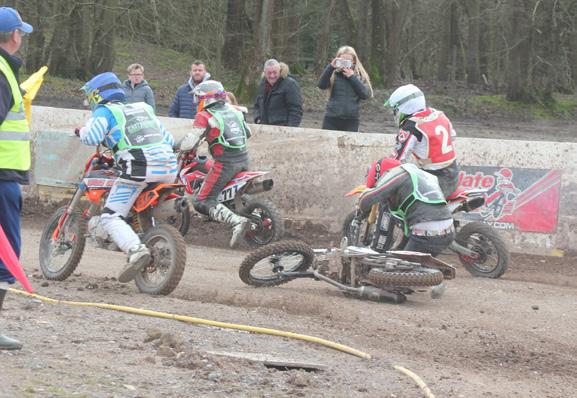
The uneven track caught out more than one rider – Peter Kimber was soon up again
With a lucky window in some positively racing-unfriendly weather, the track started off damp. With plenty of chalk underneath it offered variable amounts of grip. But sun and wind were drying it rapidly and by the end of the meeting there was a significant amount of dust blowing around. The races also got noticeably quicker. It was hard fought and there were a few tumbles, some bringing out red flags and causing re-run races. Iwade had some good riders, but they were up against a strong Eastbourne field especially with some of the young guns more usually seen on the Eagles' full-size track and with the inevitable race skills. Eastbourne took the lead in the first heat and simply kept piling on the points. There were still some inspired rides from the Colts, making the hosts work hard for a lot of those positions, but the heats gave Eastbourne a 63 point lead. Although Iwade then took charge of the series of finals, there was just too much to do to turn the tables and the home team were comfortable winners.
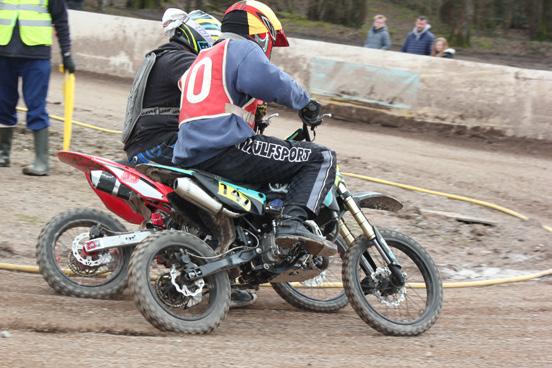
Social distancing was still unheard of as Derreck Keyes (147) holds the corner with fellow Colt Lewis Ballantyne
Rumours of impending drastic government action had been reported in the morning's news. Perhaps that added to the sense of occasion. With all due respect to the efforts of the riders, in the bigger scheme of things the event would not normally be front page news. The following day, the decision to move the country towards lockdown was confirmed, making that second leg of the 'Clash of the Titans' a historic occasion as one of the last occasions of UK sporting motorcycling for what, at the time of writing, looks like quite a while.



